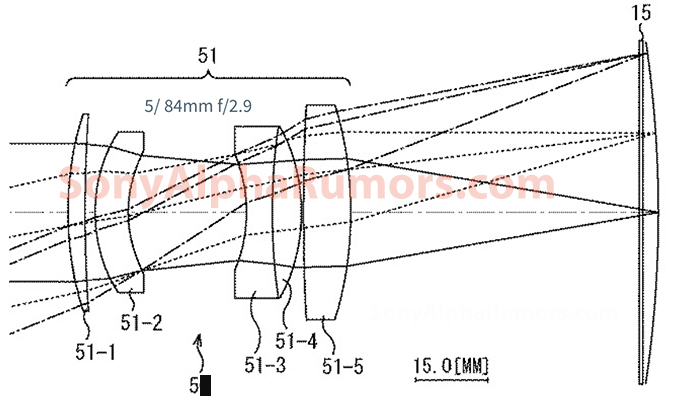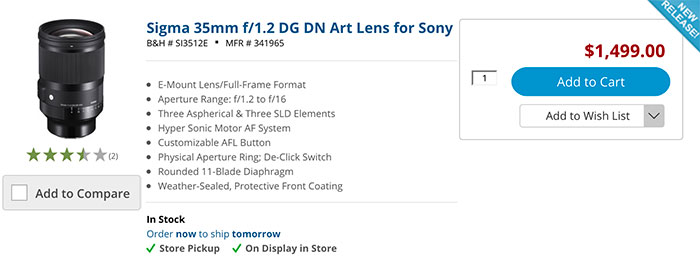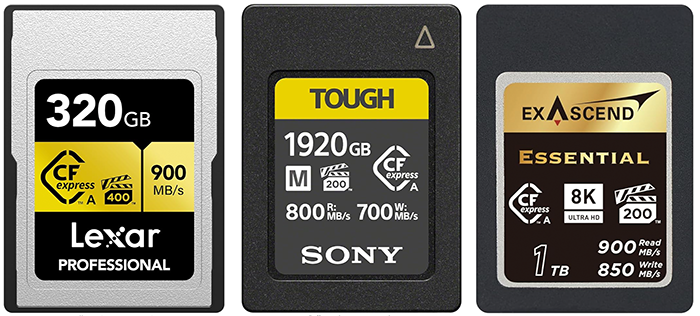Hummingbird Photography with Sony A6300 and FE 70-300 F 4.5-5.6. An easy backyard project ?
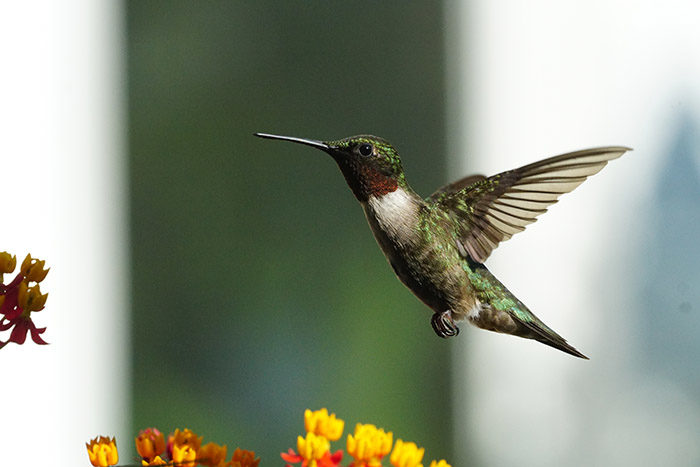
This is a guest post from AnimalsBarry. To write a guest post follow the instructions on that page. Thanks!
Editor’s note: because of the large size of the original image samples I posted only low res samples in this post. To download the full size original samples click on that Wetransfer link.
—–
If you are fortunate enough to have Ruby Throated Humingbirds in your yard here is the method I used to photograph them, without complicated high speed multiple flash units
Camera…A6300
Lens….FE 70-300 F4.5-5.6
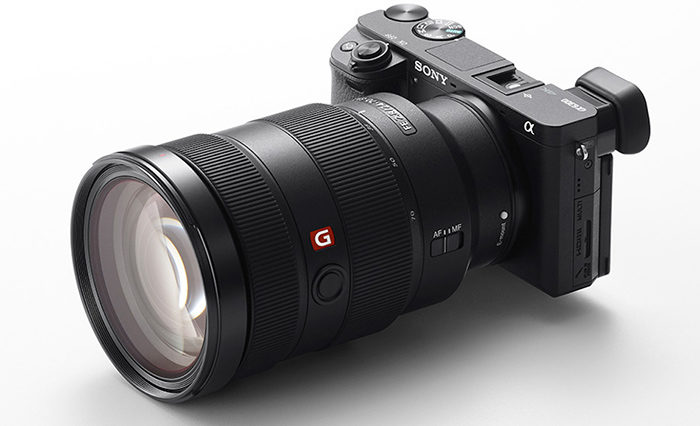
Over o a period of 2 years I began training the hummingbirds to pose for thier pictures.
I grew thier favorite food flowers in large pots, on my deck. The birds got used to feeding on them even when I would move them. It is important to choose thier favorite plant varieties for reliable results. Always choose bright red flowers as that is the color hummingbirds like. Native varieties are the most authentic. Some favorites are:
Tropical Milkweed, Red
Cardinal Flower, Red
Beebalm, Red
Petunia, red
Salvia, Red
Red Hot Pocker
Crocosmia Lucifer
By growing these in pots the birds become used to feeding on them, I also supply nectar feeders, but real plants are irresistible and make better pictures.
I choose a very clear window and clean the glass. Some windows are better to use than others, a single pane of glass with no screen is best. I used a patio door and covered the bottom with cardboard. I also wore dark clothing.
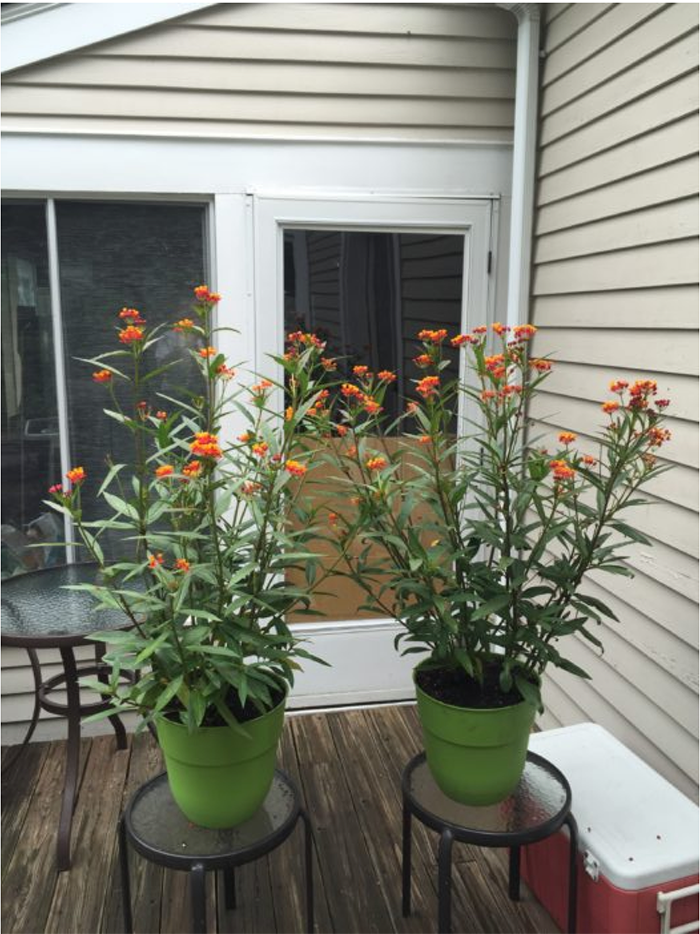
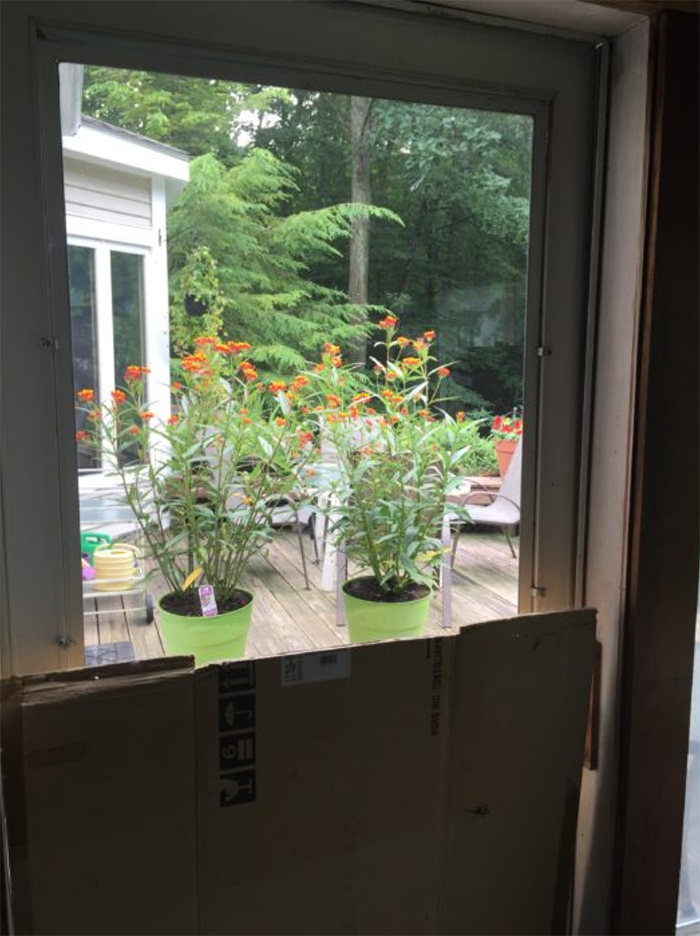
The birds chose these 2 tropical milkweed plants as thier favorites, so these are the ones I used. This plant is not native to where I live, but the Ruby Throated Hummingbird has a large range and tropical milkweed is native to more southern parts of thier range. Since I want as much authenticity as possible this is important to me.
You may notice that I have paid virtually no attention to distracting backgrounds. This is because I only use my photos as references for my paintings, so I simply do not paint the distracting backgrounds. I also photograph the plants without the birds, so I can add more plants to my composition later, and all the lighting conditions will match.
You will most likely be concerned about your background. Remember that with this technique any distant objects will be very out of focus so one solution is to make sure your background is far away. This can be accomplished simply by carefully choosing the position of the plants. Alternatively you can set up a background of your choice. Hummingbirds are very tolerant, but leave enough room for the birds to fly comfortably.
For this setup, the plants were positioned with the closest parts at least 3′ from the glass and the center of the plant 4′, the plant in full sun and me in the shade.
Camera settings:
Shutter priority, 1/4000 second
ISO auto, min ISO 3200, max ISO 25600
Autofocus, wide, continuous tracking
high speed burst mode
Lens 300mm focal length ( AF full )
I use the camera handheld for this setup.
Hummingbirds are very tiny and have a high metabolic rate, so they will return to feed every 15 minutes if you have provided their favorite flowers. Do not make sudden movements and they will accept your presence. If you miss the shot do not panic, they will return in 15-20 minutes. You can also adjust the position of the plants between visits.
Sometimes the camera will stubbornly decide to focus on the distant background. The fastest way to clear this up is to point the camera at the closest part of the plan ( not the portion you are shooting) and press the shutter button halfway. Then point it at you subject again and continue shooting.
I prefocus by aiming at the nearest portion of the plant, and depress the shutter halfway, then I release it and wait behind the glass. I shoot continues high speed burst when the bird is in front of me. I watch carefully to see when the bird is arriving, because they are very fast and will only be at your flowers for a few seconds per visit. Fortunately they hover so they are easy to follow with the camera if you are ready for them. Again: do not make sudden movements, move at normal speed and remain calm so you do not frighten them. And do not panic if you miss the shot, wait patiently , they will be back in 15-20 minutes.
My highest priority is fast shutter speed to stop the movement of the wings, so I use Shutter priority and set the speed at 1/4000. My next highest priority is depth of field. I set the ISO at automatic. I set the upper limit as high as the camera will allow me to, and the lower limit at 3200. My goal is to make the camera set the aperture at between F7 and F8. In full sun that is a minimum ISO of 3200. If your lighting is different you may need to set the minimum ISO higher. You do not want the camera to shoot at F 5.6 because you will not be able to get the entire bird in focus. The slight additional noise and lower dynamic range that these high ISO settings generate is more than compensated for by the dramatic photos you will be getting.
Unlike other setups that utilize high speed flash, this setup allows use of the 11 frame per second burst speed that the A6300 is capable of. This allows me to capture multiple wing positions in the few seconds the birds are in position. You will see from the samples that I have captured many different wing positions from a single visit. I now have several interesting pictures to choose from rather than the few I would have with flash. It is also a lot simpler to set up than complicated multiple flash units. I will be experimenting with reflectors to enhance the lighting. Reflectors of coarse move this beyond a “simple” ongoing backyard project.
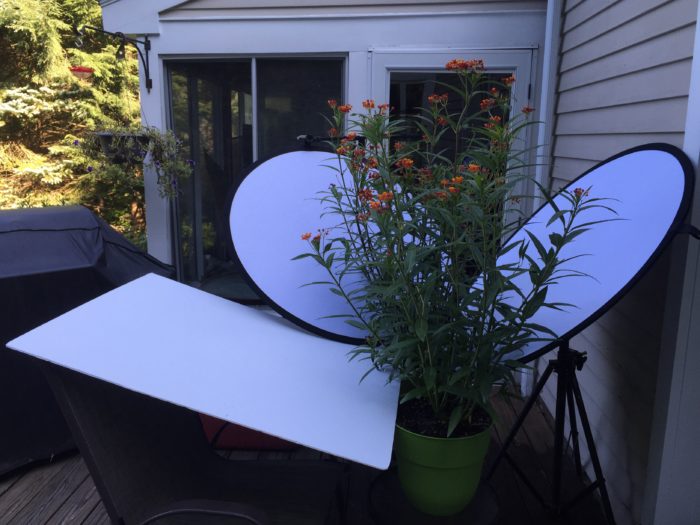
Here is one of the reflector setups I tried. This was set up before the sun reached my location. The intention is to achieve better color and shadow detail, thereby reducing the need for post processing.
Here are the pictures directly from the camera:
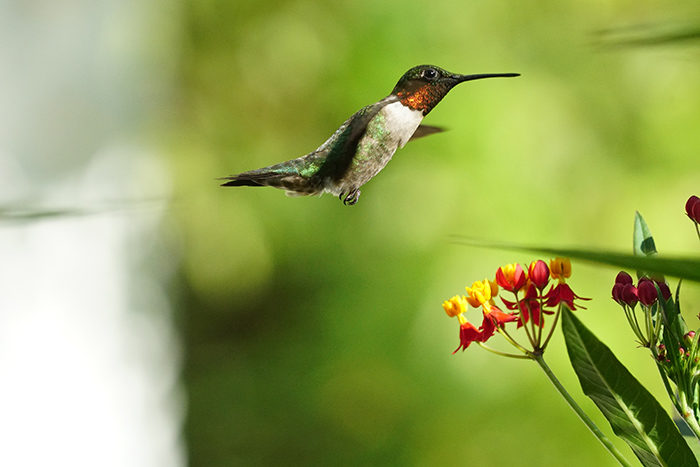
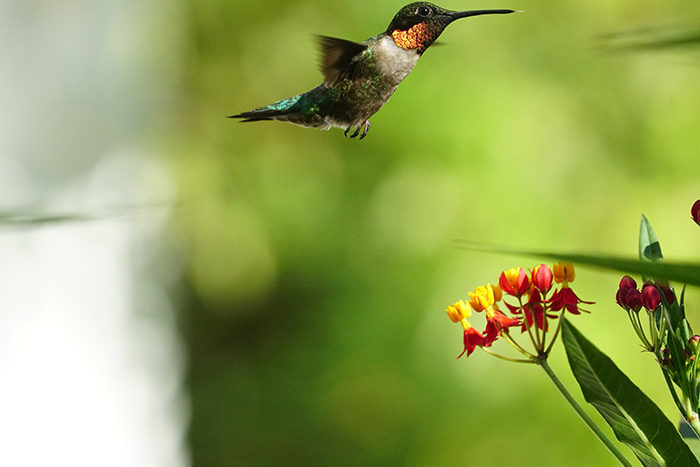
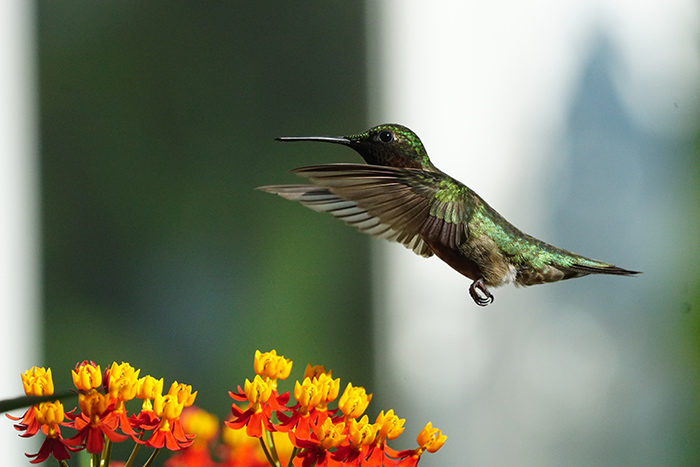
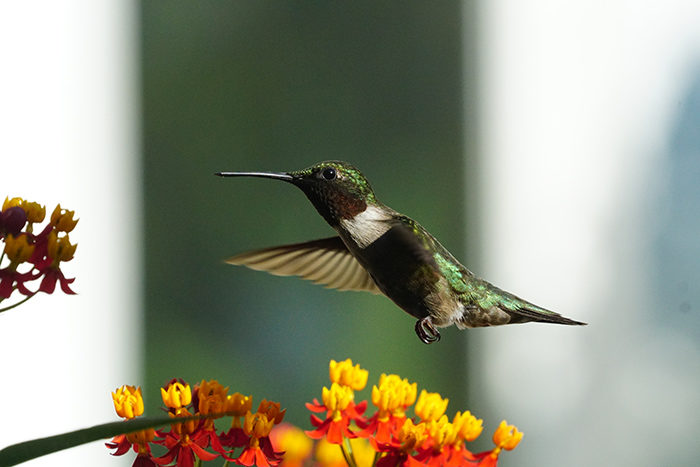
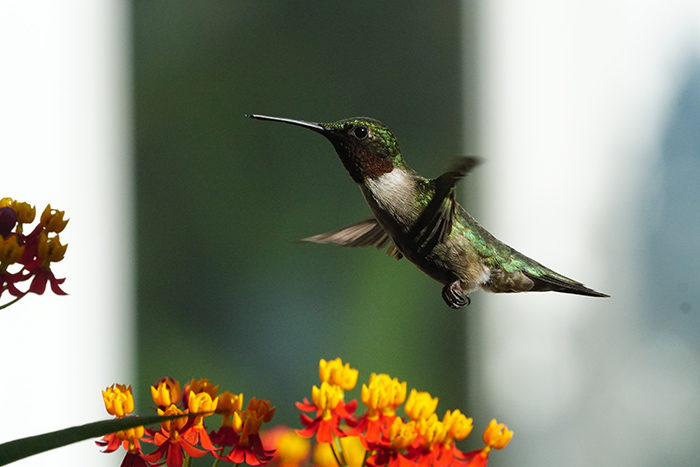
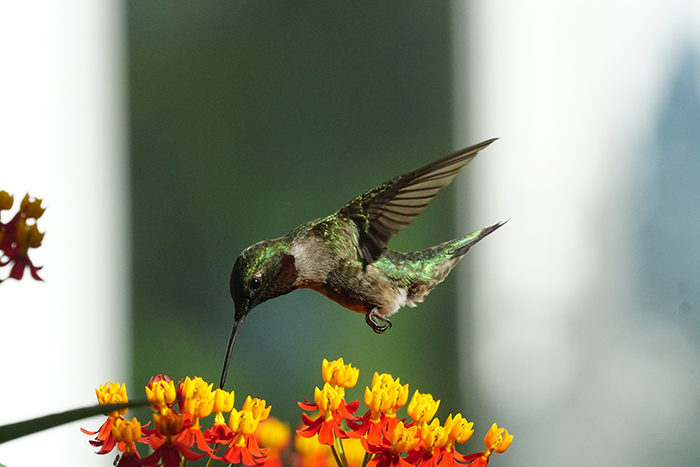
Here are some comparison shots with differrent camera setups.
Nikon D810 w 200-400mm f4 VRii and TC 20e iii:
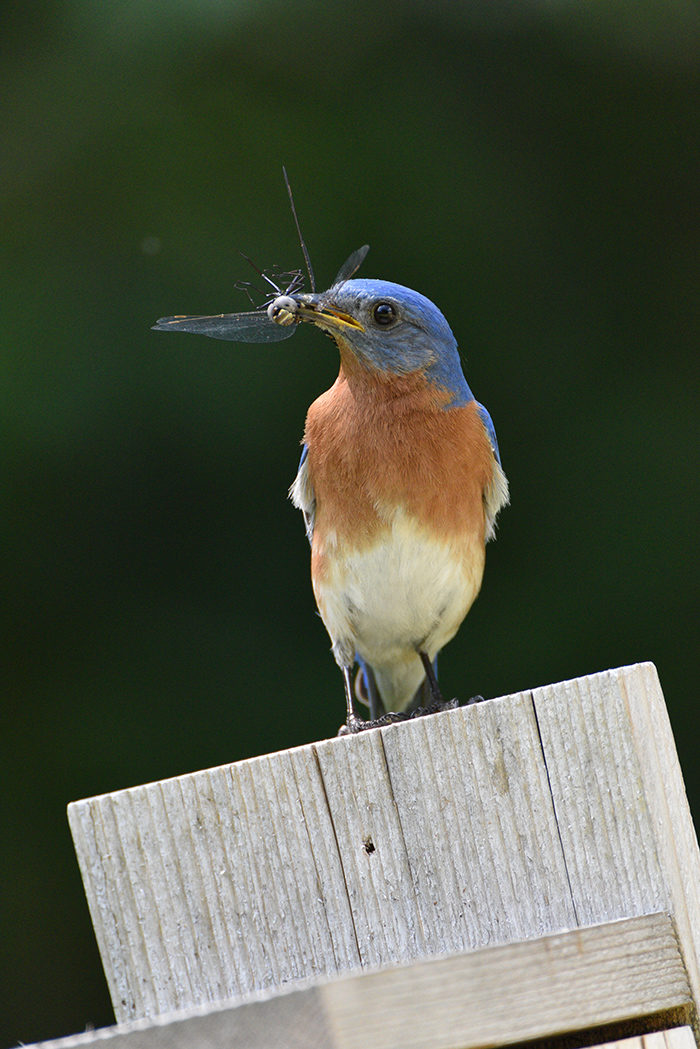
Sony A7Rii w FE 70-300mm F4.5-5.6:
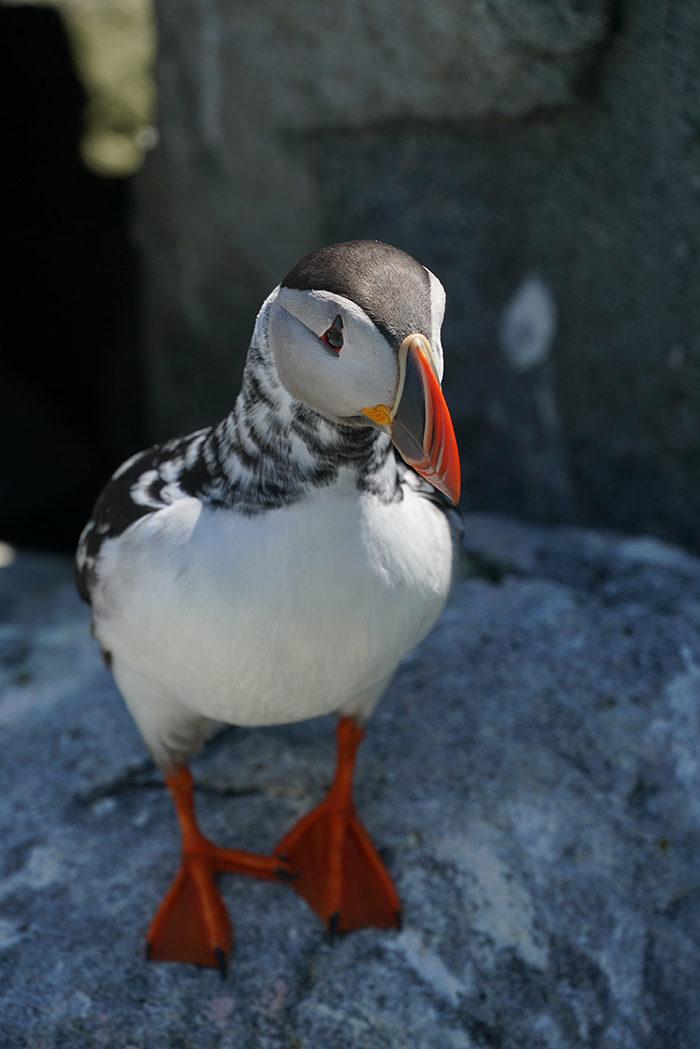
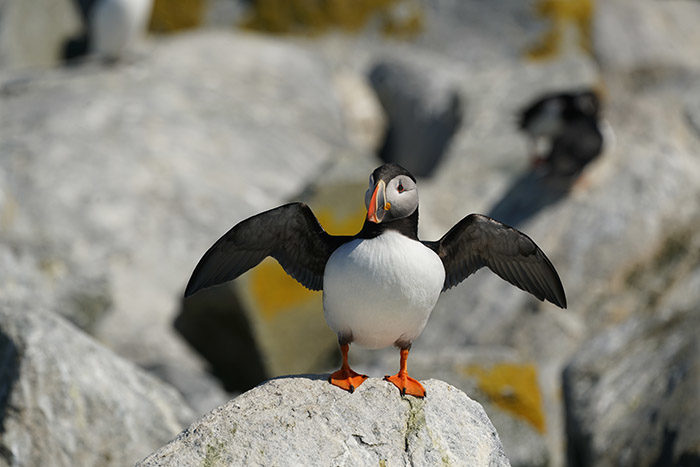
Sony A7Rii w FE 90mm f2.8 macro:
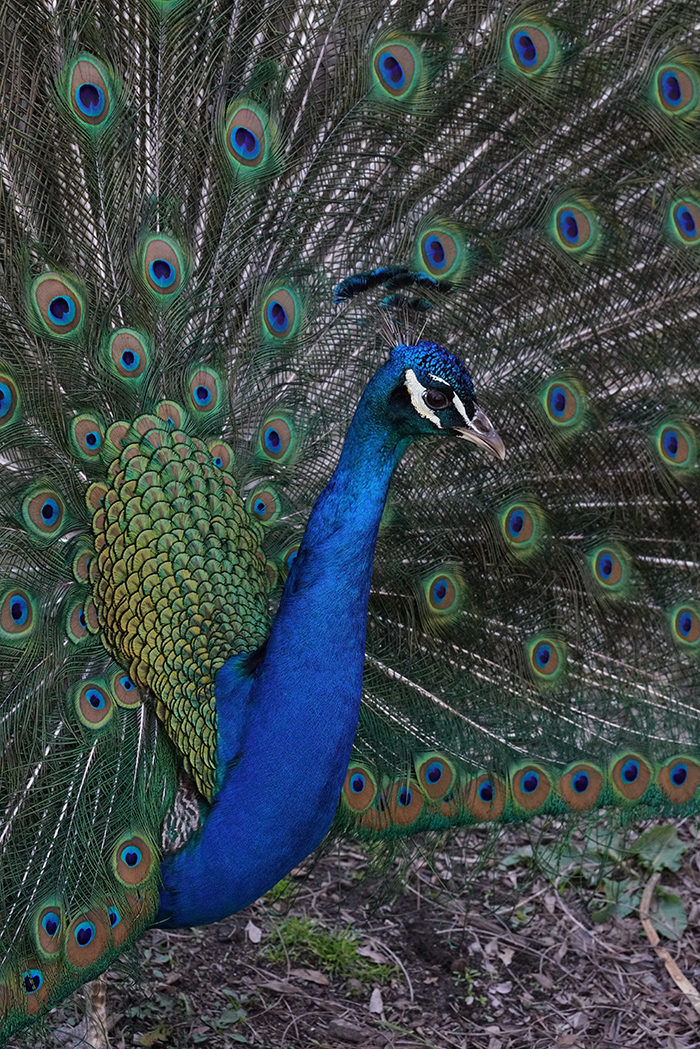
Editor’s note: because of the large size of the original image samples I posted only low res samples in this post. To download the full size original samples click on that Wetransfer link.
